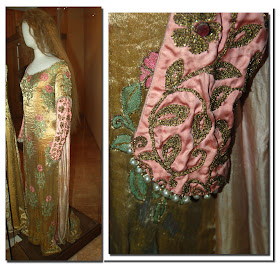
I seem to include a lot of food things on this blog. If you wonder why that is, it is because I consider cooking and food, another creative outlet. As in fashion design, the culinary arts have elements and principles of design… all which need to be combined creatively to come up with the finished product.
Once I return home from Italy, I am preparing dinner for the Film Club I am a member of. How fun! My plan was to work on my Italian by buying an Italian cookbook with hopefully step-by-step instructions, so that I would have a little assistance with the text. Indeed I was able to find such a book, and I have been enjoying going through it, trying to decipher certain things, and planning a menu for the group.
I decided I needed to have a practice run, so I could see how I am doing, and see if there are any words that become critical to the translation. So, I invited a new friend to dinner, with fair warning, “I am translating”.
Here is my planned menu (and not all of comes from the cookbook text). Some of it I am winging, either from looking at the pictures, or from some of the food I have savored over and eaten here.
Antipasto: Sfoglia di pane con cipolla, e pomodori freschi e olive Bread with onions, fresh tomatoes and olives
Primo PiattoOrecchiette con pomodoro, rucola e ricottaOrecchiette (pasta) with tomoto, rucola and ricotta
Secondo PiattoPollo con aglio, olivi, e pestoChicken with garlic, olives and pesto
Il DolceBiscotti amarettiAmaretto Biscotti
My dinner guest is Giada Floris.., who is an artist I met on my last visit. She will be conducting a workshop in June for the Design Retreat I am hosting here in Italy. I thought dinner would be a nice way of getting to know her better.
So, the dinner progressed…
First… take a look at the recipe, and then the number of words I had to look up to understand! I thought I was doing well in Italian, but this humbled me.


Then… some of the ingredients, as I prepared.

The cheese that was called for was new to me. It was a aged and smoked ricotta. It looked and smelled a little strange, but hey... that is what this is all about, right? experimentation.

The pasta was orecchiette, and I was happy to let Giada tell me about the art of "al dente". Needless to say, I put her in charge. Here she is measuring it out, and draining it once it was cooked.

There was one Italian word I could not find in my dictionary, so Giatta explained it to me. The word is
saltatevi. It translates to
jump things in the pan. Basically, I liken it to the technique you use when you flip an omelette. I had never thought that one does that with pasta.

So... time to eat.
Here we have the crostini and the salad

followed by the pasta (Il Primo)

and then the Il Secondo...

and of course wine...
We were too full to eat dessert..
The entire dinner process was a blast: from the planning to grocery shopping to translating to the preparation and finally the eating (Mangia!)
The meal lasted for two hours,which is how the Italians love to do things... nice and slow, and full of good conversation.
I thank Giada for being my 'court taster'. The recipe was approved and I will serve it at the film club meeting (amongst others).


















































